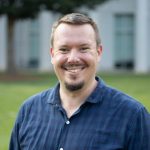At 12,951 feet, Clark Peak is the highest summit in the Medicine Bow Mountains of northern Colorado. It offers a diverse array of outdoor activities for adventurers and nature enthusiasts alike.
In This Article
TL;DR
- Clark Peak: The highest summit in the Medicine Bow Mountains, offering diverse outdoor activities.
- Accessibility: Details on how to reach Clark Peak, including trailheads and best times to visit.
- Conservation Efforts: It is important to respect the natural environment and undertake ongoing conservation projects.
Exploring the Trails Around Clark Peak
The area surrounding Clark Peak features a network of hiking trails suitable for various skill levels. The Ruby Jewel Trail, accessible from the parking area, rises approximately 1,850 feet over 3 miles, leading hikers through picturesque alpine meadows and wildflower-dotted landscapes. For those seeking a more challenging experience, the Blue Lake Trail in the nearby Rawah Wilderness offers an alternate route to the summit.
When preparing for high-altitude hikes, it’s essential to carry adequate water, snacks, and appropriate clothing layers to accommodate changing weather conditions. Be mindful of afternoon thunderstorms, which are common in the summer months. Check with the National Park Service before embarking to be aware of any closures, inclement weather, or necessary climbing permits.
Along the trails, keep an eye out for the diverse wildlife and natural attractions, such as columbines, Colorado’s state flower, and the pristine alpine lakes that punctuate the landscape. Just to the west of Clark Peak is Capitol Peak, which is considered a very difficult climb and often paired with Clark Peak.
The Climber’s Guide to Clark Peak
Clark Peak presents a thrilling challenge for technical climbers with its exposed ridges and knife-edge sections. The south-southeast ridge route offers an alternative to the treacherous west ridge. It involves a bushwhack up Bear Creek into Pierre Lakes Basin, followed by an ascent of the broader southeast ridge.
Safety should always be a top priority when rock climbing. Ensure you have the necessary gear, including a helmet, sturdy boots, and a reliable navigation system. Be prepared for potential Class 3 scrambling and assess your skills and experience before attempting the climb. Consider hiring professional mountain guides to assist with the climb when in doubt.
The best seasons for climbing Clark Peak are typically July through September, but always check weather forecasts and be prepared to turn back if conditions deteriorate.
Winter Sports and Activities
When snow blankets the landscape, the trails around Clark Peak transform into a winter wonderland perfect for cross-country skiing and snowshoeing. However, it is crucial to be aware of avalanche risks and carry appropriate safety gear, such as beacons, probes, and shovels.
Familiarize yourself with winter wilderness survival techniques, including constructing emergency shelters and navigating in challenging conditions. Observe the seasonal changes in the landscape and wildlife behavior as many species adapt to the harsh winter months.
Camping and Overnight Stays
For those looking to extend their visit, designated camping areas are available near Clark Peak, subject to backcountry camping regulations. When camping, practice Leave No Trace principles to minimize your environmental impact. This includes properly disposing of waste, respecting wildlife, and camping in established sites where possible.
When packing for an overnight stay, bring essential gear such as a reliable tent, sleeping bag, and cooking equipment suitable for the backcountry. Given the high elevation, be prepared for cold temperatures, even during summer.
When hiking in the Rawah Wilderness, camping is allowed anywhere at least 200 feet from any major body of water, and fires are not allowed over 11,000 feet. Other good camping locations can be found in the Timber Lake/ Island Lake area or the Blue Lake/ Hang Lake area.
Photography and Scenic Views
Clark Peak and its surroundings offer countless opportunities for photography enthusiasts to capture the area’s natural beauty. The summit provides panoramic views of the Rawah Wilderness to the north and the peaks of Rocky Mountain National Park to the south.
For the best lighting conditions, consider visiting during the golden hours around sunrise and sunset. Be prepared for the challenges of high-altitude photography, such as rapidly changing weather and the need for sturdy tripods in windy conditions.
Local Flora and Fauna
The Clark Peak area is home to a diverse array of plant and animal species adapted to the high-altitude environment. In the summer months, wildflower enthusiasts can spot species like the Colorado columbine, alpine forget-me-nots, and sky pilot.
Wildlife sightings may include marmots, pikas, and bighorn sheep. Remember to observe wildlife from a safe distance and avoid disturbing their natural behaviors. Be aware of the conservation status of local species and their habitats, and support ongoing efforts to protect these fragile ecosystems.
FAQ
What is the best time of year to visit Clark Peak for hiking?
The best time to hike Clark Peak is typically from July through September when the trails are snow-free, and the weather is most stable. However, always check current conditions and be prepared for afternoon thunderstorms.
Are there any permits required for climbing or camping at Clark Peak?
Permits are not typically required for day hikes or technical climbs at Clark Peak. However, overnight camping may be subject to backcountry camping regulations, so checking with the local ranger district for the most up-to-date information is essential.
What are the most common hazards to be aware of when visiting Clark Peak?
Some of the most common hazards at Clark Peak include high-altitude conditions, rapidly changing weather, and exposure to steep, technical terrain. Be prepared with appropriate gear, knowledge of the area, and the willingness to turn back if conditions become unsafe. Check with the National Park Service before embarking to be aware of any closures or safety alerts.
Can beginners attempt climbing routes on Clark Peak?
While some routes on Clark Peak may be suitable for experienced beginners, it’s essential to have proper training, rock climbing equipment, and guidance before attempting any technical climbs. Consider hiring professional mountain guides or taking a mountaineering course before embarking on more challenging routes.
How can visitors contribute to the conservation of Clark Peak’s natural environment?
Visitors can contribute to the conservation of Clark Peak’s natural environment by practicing Leave No Trace principles, respecting wildlife and their habitats, and supporting local conservation efforts through volunteering or donations. By being responsible stewards of the land, we can help preserve these precious landscapes for future generations.







